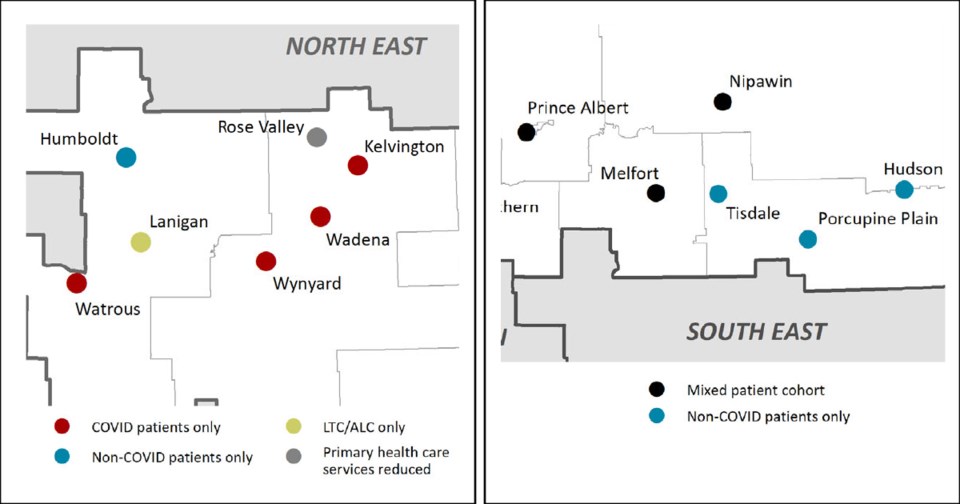EAST CENTRAL — Hospitals across Saskatchewan are preparing for a situation where they’ll need 3,329 acute care beds province-wide, with 890 of those classified as intensive care, at the peak of the pandemic.
“Our response will be staged according to increases in demand,” said Derek Miller, the Saskatchewan Health Authority’s emergency operations centre lead, at a media conference that discussed the authority’s preparations for the pandemic held April 8.
Miller said the province is now working to reduce the number of beds needed for non-essential services, an effort that has freed up around 1,000 acute care beds.
At the media conference, the authority said it currently has 2,433 acute care beds, with 1,396 being used, and 98 intensive care beds, with 57 being used.
The plan is to consolidate COVID-19 patients as much as possible, keeping them within the same ward within a health facility. As cases increase, entire facilities could be designated as COVID-19 hospitals. Two field hospitals could be set up at Merlis Belsher Place in Saskatoon and Evraz Place in Regina.
If the need arises, Humboldt, Tisdale and Porcupine Plain will be designated non-COVID-19 hospitals; Melfort, Nipawin and Prince Albert will be mixed hospitals; and Watrous, Wadena and Kelvington will be designated COVID-19 hospitals. The COVID-19 hospitals will have emergency services open to the public.
The health authority is basing the number of beds needed on its mid- and high-range projections. The mid-range projection assumes one person infected with COVID-19 will infect 2.76 others, while the high-range projection assumes one person will infect four others.
The high-range projection would require 4,265 acute beds at the peak of the pandemic, with 1,280 in intensive care. The authority is also making plans if those numbers are needed. The mid-range projection would require 1,265 acute beds, with 380 in intensive care.
The low-range projection assumes one person would infect 2.4 others, requiring 390 acute beds, with 120 in intensive care.
Anti-COVID-19 measures are having an effect, said the authority, but it’s hard to say where Saskatchewan currently sits in relation to the projections. They emphasized the projections are not predictions of what will happen, but are tools they use to prepare the healthcare system.
Miller said the Saskatchewan Health Authority is planning a provincial response.
“It's not by facility or siloed within areas or geographies. We are going to manage this through centralized bed flow co-ordination, air traffic control-like co-ordination of patients to ensure that they are seeking and getting care in the right locations.”
The authority’s plans assume that COVID-19 patients for rural and northern areas that need intensive care will be moved to urban areas once space runs out locally.
In the northern region, which contains Melfort, Nipawin and Tisdale, the authority is preparing for 199 intensive care patients at the peak of the pandemic while having 131 beds. In the rural region, which contains Humboldt, the authority is preparing for 236 patients while having 80 beds.




